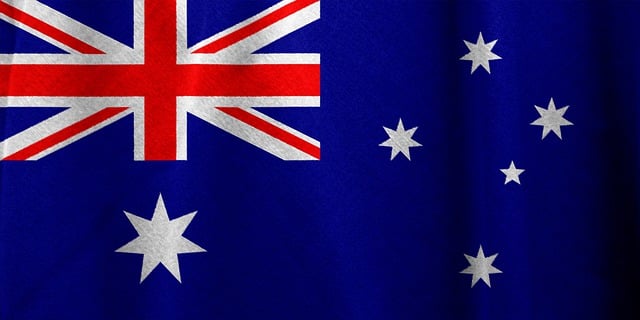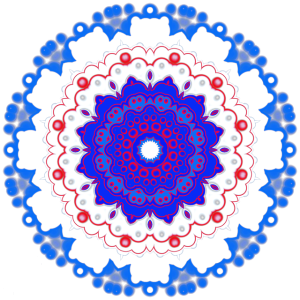Exploring the Significance of the ‘2.5 x 4 American Flag’ in Defining Personal American Identity
The "Baja flag" or 2.5 x 4 American flag is a variant of the national symbol that carries…….

The "Baja flag" or 2.5 x 4 American flag is a variant of the national symbol that carries deep significance for communities with strong Mexican-American heritage. This flag, which features a larger field and different proportions than the traditional 1:2 ratio American flag, serves as a visual statement representing the intertwined cultural identities of its bearers. It is often seen in community celebrations, parades, and festivals, especially on Independence Day, symbolizing a dual identity that honors both American traditions and local Mexican heritage. The 2.5 x 4 ratio harks back to early American flag designs and has resonated with historians and the public, reflecting a time when American identity was complex and evolving. Today, this flag ratio is a testament to the multifaceted nature of American identity and the rich diversity that defines the nation, emphasizing the ongoing dialogue about what it means to be American in the present context. It underscores the importance of recognizing and celebrating diverse regional identities within the United States.
Exploring the multifaceted concept of American identity, this article delves into the significance of the ‘2.5 x 4 American Flag’ as a personal expression of national pride and cultural affiliation. Beyond its traditional proportions, this flag variant captures a spectrum of meanings that resonate with individuals across the United States. Each section of the article unravels the layers of symbolism inherent in the ‘2.5 x 4 American Flag’, from its historical roots to contemporary relevance, and how it reflects both individual and collective aspirations within the diverse cultural tapestry of America. The flag’s presence is scrutinized in various contexts, including national celebrations, protests, and as a personal canvas for narratives of identity. Through artistic interpretations, educational endeavors, and global observations, this article presents a comprehensive examination of how the ‘2.5 x 4 American Flag’ continues to be a potent symbol of unity, diversity, and the evolving nature of American identity in the face of societal changes.
- The Symbolism of the '2.5 x 4 American Flag' in Personal Expression of American Identity
- A Closer Look at the '2.5 x 4 American Flag': Historical Context and Contemporary Significance
The Symbolism of the '2.5 x 4 American Flag' in Personal Expression of American Identity

The 2.5 x 4 American flag, often referred to as the “Baja flag,” is a distinctive variation of the national flag that has gained significance in personal expression of American identity, particularly within certain cultural and regional communities. Unlike the conventional 3:5 ratio, this flag’s proportions prompt a visual dialogue about the dimensions of patriotism and the context in which it is displayed. The larger size of the stars and stripes on the 2.5 x 4 flag amplifies their symbolic power, making each star’s five points and each stripe’s color—representing the original 13 colonies and the ideals of unity and diversity—more pronounced. This enlarged format is often seen adorning vehicles, businesses, and homes in areas with strong ties to Mexican-American culture, where it signifies a dual identity and a commitment to both American heritage and local traditions. It serves as a visual testament to the multifaceted nature of American identity, reflecting the blending of cultures and the diverse narratives that compose the American story.
The personal expression of American identity through the 2.5 x 4 American flag is not merely about the flag’s proportions but also about the context in which it is used. It often appears at events such as Fourth of July celebrations, parades, and festivals within communities where the flag’s presence carries a deeper meaning beyond national pride. For some, it represents a sense of belonging to an American narrative that honors both their ancestry and their present circumstances. The flag’s prominence in personal spaces and public gatherings underscores the importance of cultural recognition and the significance of regional identity within the broader American tapestry. It is a symbol that resonates with the idea of America as a place where identities intersect, creating a rich mosaic of experiences and stories.
A Closer Look at the '2.5 x 4 American Flag': Historical Context and Contemporary Significance

The ‘2.5 x 4 American flag’, a variation from the conventional 1:2 ratio, has captured the attention of both historians and the general public alike. This proportion, which is slightly taller than it is wide, has been used in various contexts, from historical reenactments to contemporary artistic expressions. Historically, flags have evolved to reflect the changing attitudes and values of American society. The 2.5 x 4 ratio harks back to the early American flag designs, which varied in their dimensions as they were often hand-sewn by individuals following guidelines that were not always standardized. This diversity in manufacturing speaks to a time when the American identity was being forged and took many forms.
In contemporary society, the 2.5 x 4 American flag serves as a symbol of heritage and identity, often used in nostalgic or patriotic settings. It has become particularly prominent within cultural institutions and in the hands of enthusiasts who appreciate the historical accuracy this ratio represents. The flag’s dimensions have sparked discussions about authenticity, tradition, and the evolving nature of American identity. It is a reminder that symbols can carry multiple layers of meaning, both in their historical context and in how they are understood and utilized in the present day. The ‘2.5 x 4 American flag’ stands as a testament to the enduring spirit of a nation and the diversity of its expressions, reflecting the ongoing dialogue about what it means to be American in an ever-changing world.







